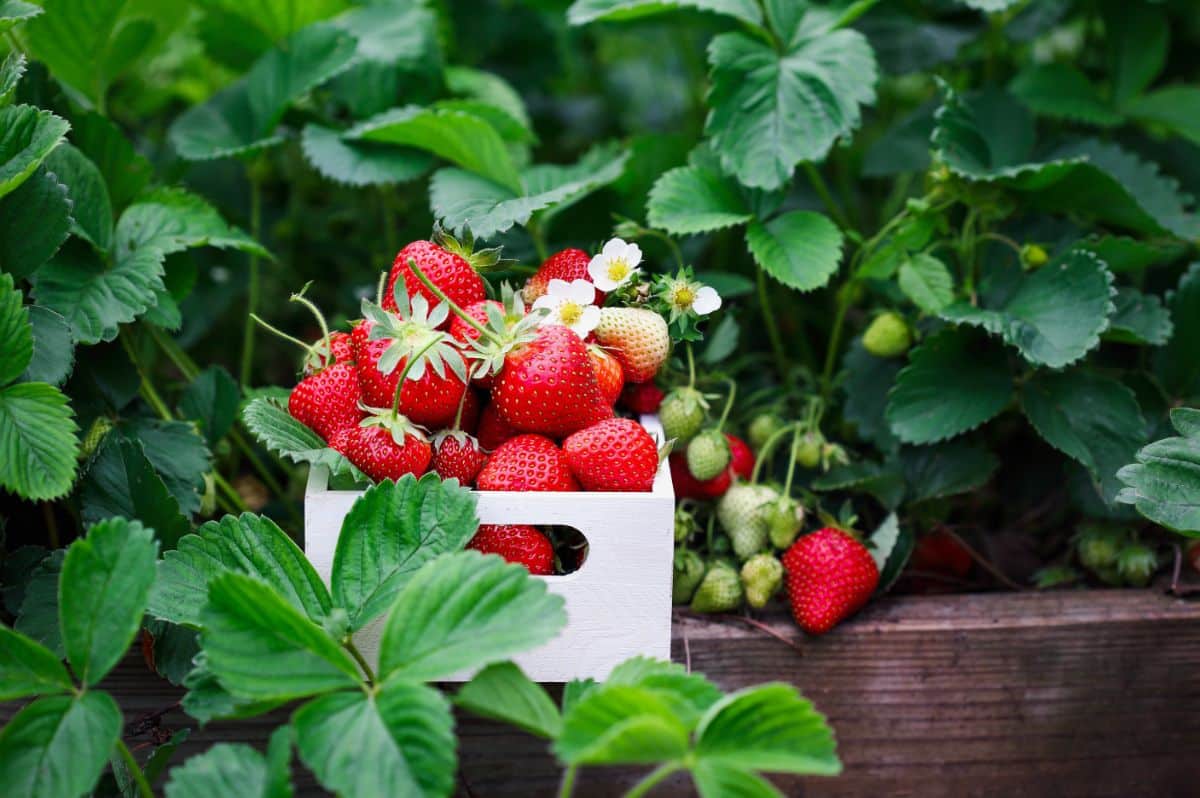
There are two types of strawberry plants you can grow. (There are many varieties of strawberry plants within those types, but all will fall into two basic categories.) Those are everbearing strawberries* and June-bearing strawberries.
Jump to:
What are June-Bearing Strawberries?
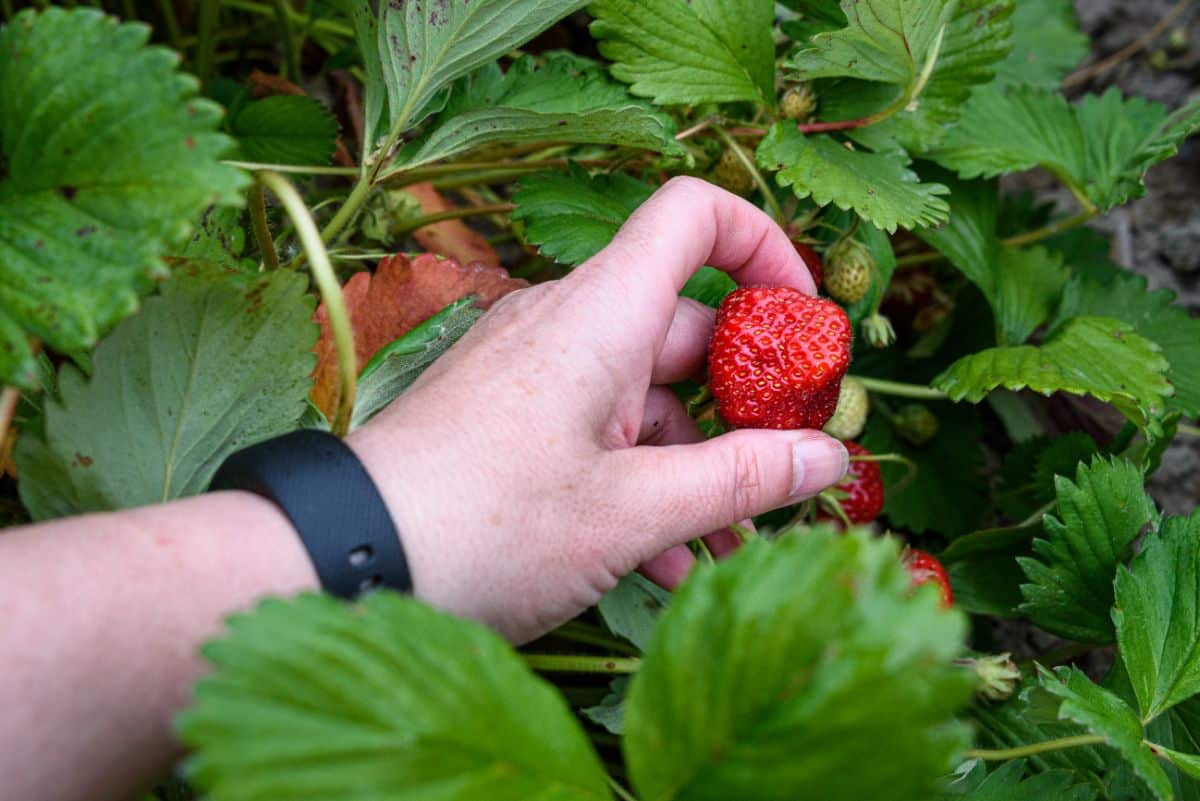
June-bearing strawberries are exactly what they sound like they are, based on their name. They are strawberries that bear fruit and are harvested in June, over a period of two to four weeks, with three being the average for a single variety.
June-bearing strawberries grow and bear fruit in response to the length of the day and daylight hours, setting buds when days are short and developing into fruit when days warm and lengthen. Because of this, you may also see them called short-day strawberry plants.
These are the large strawberries that most commercial growers grow. They are what you’d usually pick at a u-pick or pick-your-own strawberry farm.
June-bearing strawberries are the most popular type and are the type that most people are familiar with. Depending on where you live and grow, they may fruit earlier or later than June, but early to late June is the usual time for June-bearing strawberries to be in season, hence the name.
*Day-neutral strawberries are technically a third type, but they are usually considered and listed as everbearing strawberries because, essentially, they are. For our purposes, we’ll consider day neutral as everbearing.
Cons of June-Bearing Strawberries
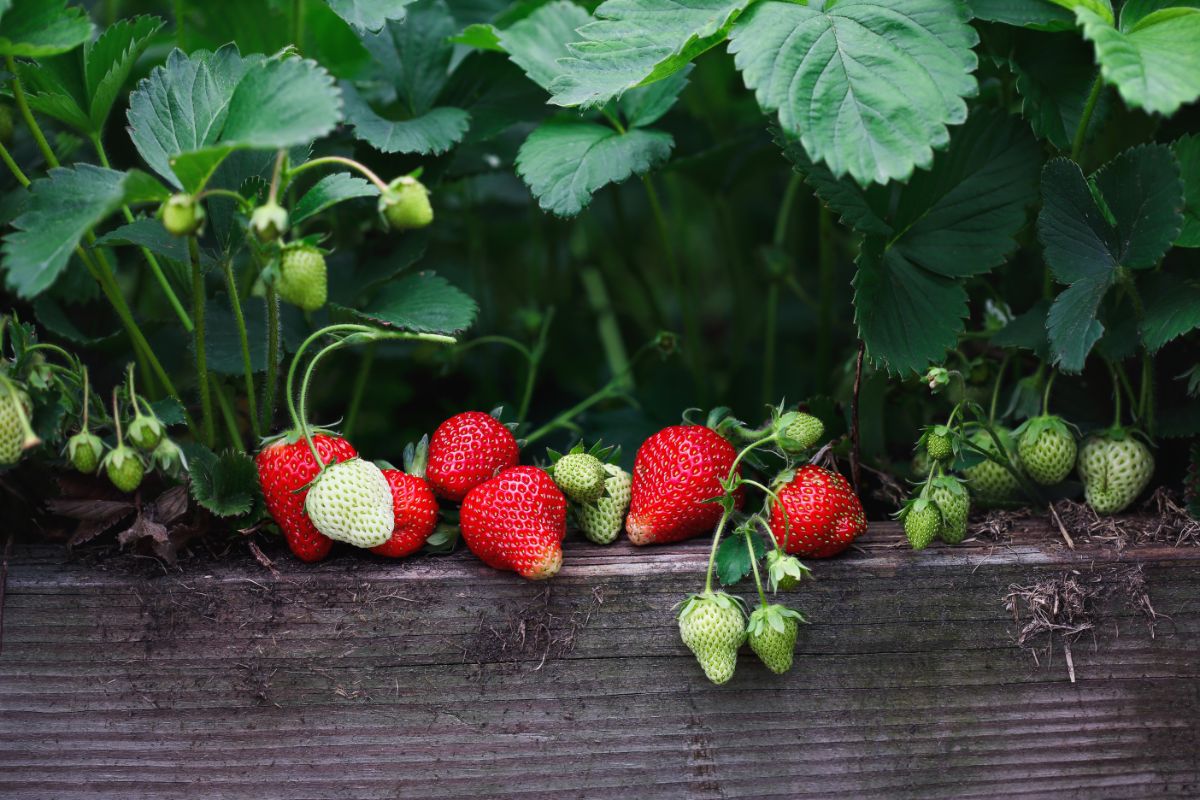
When we say cons, we don’t necessarily mean these things are all bad—it’s more that they may be less than ideal, depending on your growing and harvesting goals. Few (if any) things about June-bearing strawberries are really “bad”.
Here are some of the things about June-bearing strawberries that might be a drawback:
- Takes two years to get a harvest—it is advised that you pinch blossoms in the first year to send energy to plant growth, so you won’t harvest until year two when you plant a new bed
- Large harvests all at once can be time-consuming and difficult to deal with if you have limited time for gardening/harvesting/and preserving
- Slightly lower freezing quality (this is some indication of preserving ability)
- More prone to crop loss from late frosts (if frost kills flower blossoms since they set blossoms over a short period of time only)
- Only have fresh berries for eating for a few weeks of the year
- Need to plant multiple varieties to extend harvest, and at best, the harvest period, even with early-, mid-, and late varieties, will only be four to six weeks (six would be a real stretch)
- June-bearing strawberry patches require renovation every year after harvest
- Higher overall maintenance versus everbearing strawberries
Pros of June-Bearing Strawberries
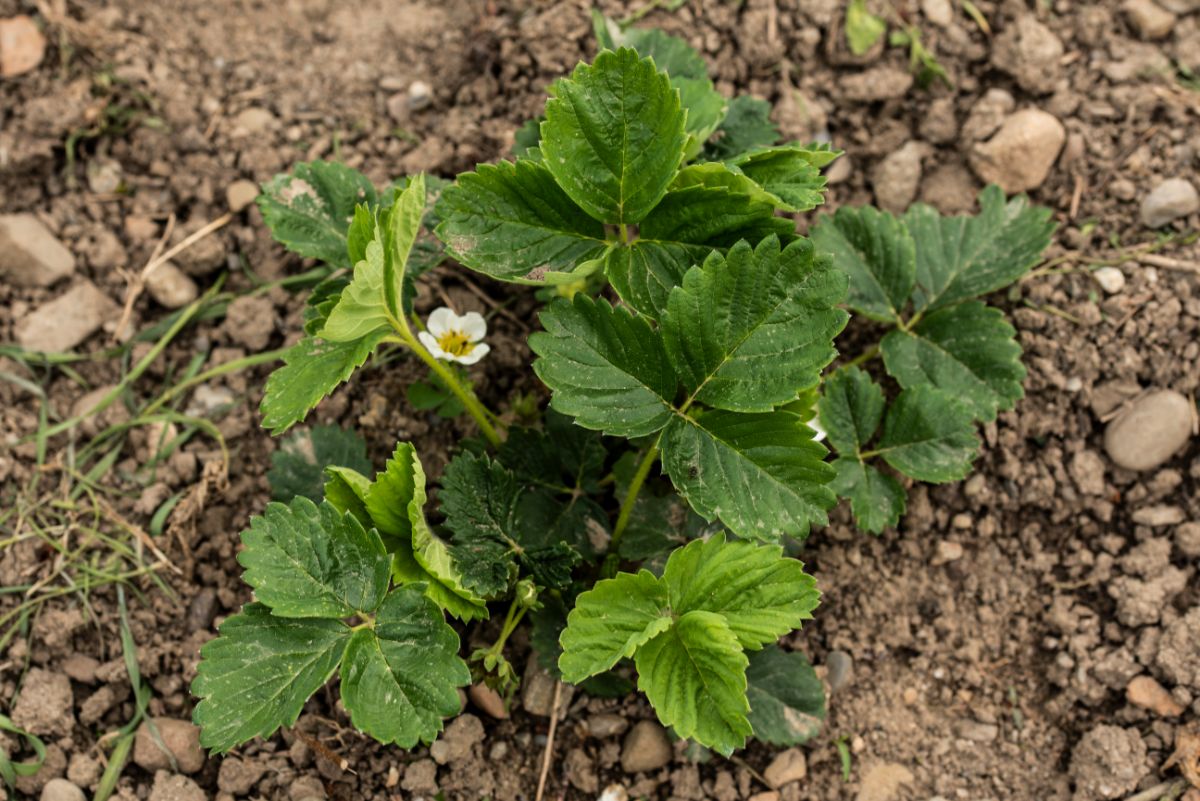
So, what’s great about June-bearing strawberries (other than their obvious sweet deliciousness)? What advantages do they have over everbearing strawberry varieties?
- Generally higher dessert quality (indicative of fresh eating quality)
- Good preserving and freezing quality, though some varieties are better than others
- Picking, harvesting, and preserving work is done in a span of a few weeks, and then only periodic weeding and maintenance needs to be done for the rest of the summer growing season
- Large yields of berries all at once make large preserving sessions easier
- Handle high heat periods better than everbearing, which stops bearing in high heat
- Better for hotter growing climates
- Easy to pick a lot of strawberries in a small amount of time in a well-tended patch
- On average, berries are larger in size, and so are better for some uses (like chocolate-covered strawberries)
- Berry harvest occurs at a time when few other berries and vegetables are ripe for harvest, so it may be easier to deal with your jamming, canning, and preserving without the pressure of added vegetable crop harvesting and preserving
One Person’s Pros are Another Person’s Cons
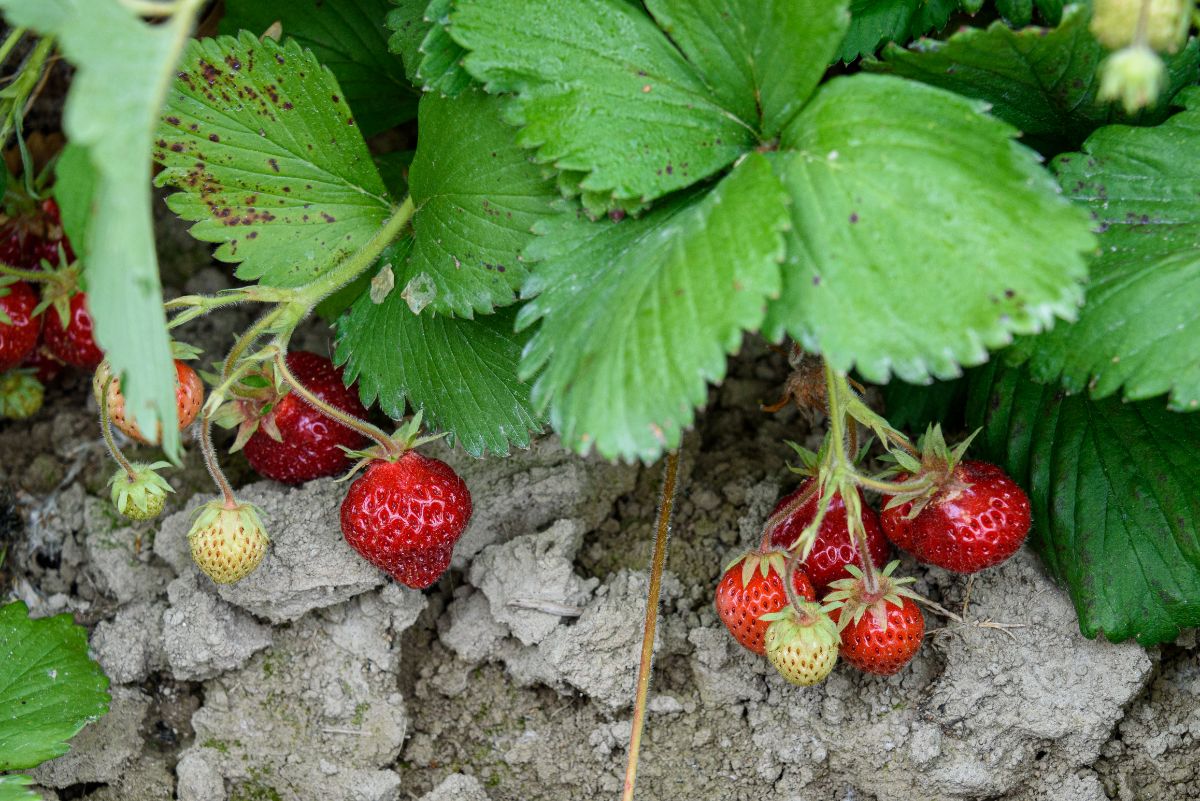
There really is no good or bad type of strawberry. Everbearing versus June bearing, they both have their benefits, and they are both delicious, enjoyable, low-maintenance plants to grow. As with many plants and crops, what’s best for you often depends on your goals and time.
For example, do you want all your strawberries harvested at once, so you can dry, freeze, jam, and can them all together? Or do you prefer fresh eating and you want to stretch that out for as long as you can?
Do you prefer bigger, plumper berries? Or does size not matter much as long as you can have them most of the time?
Would you prefer smaller flushes of fruit that you can manage better? Or do you grow other fruits and vegetables, and you need to be done with strawberries in June so you can move on to growing and preserving the other things you grow?
The best type of strawberry for you to grow is up to you, your time, and your other commitments. Both everbearing and June-bearing are very good options, but there might be a reason you choose one over the other. Maybe the right type for you is a mix of both everbearing and June-bearing plants.
We hope this guide has helped you make that decision. Whatever type of strawberry you choose to grow, have fun and enjoy them!
These are the top pros and cons we’ve experienced for growing June-bearing strawberries. What are yours?
We’d love to hear them in the comments, so others can see what’s good—or not—about growing June-bearing strawberry varieties.




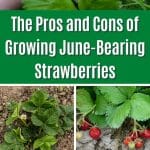
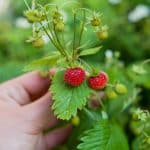
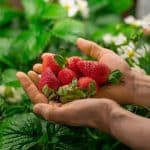

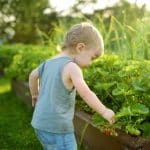
Teresa Miller says
Can I plant two different kinds of strawberries in the same bed or will they cross pollinate?
Mary Ward says
Yes, you can. They may cross pollinate but for berry production that is not usually a bad thing and can often improve pollination, size, and yield. The only time cross pollination matters is when you want to save seeds and you want to make sure they are true. But many plants are hybrids anyway, which means seed saving is not your best propagation option. My advice is if you want more than one variety, go for it!